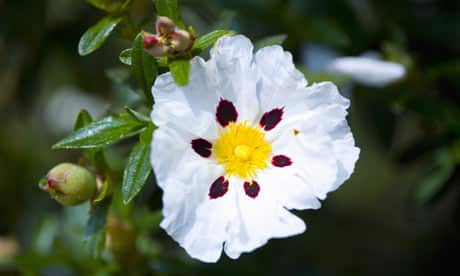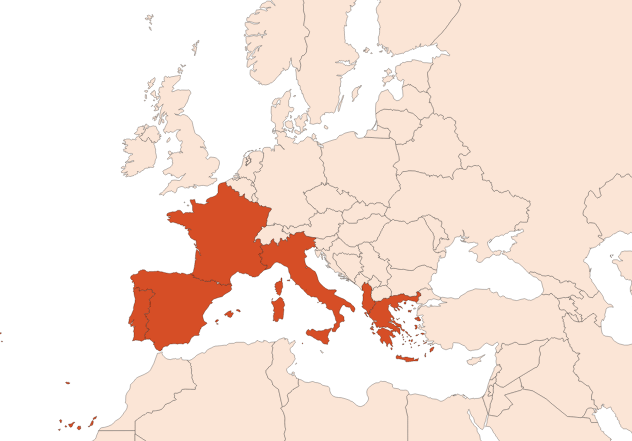Extraction process :
In April, Cistus ladaniferus fields are covered with the famous white flowers, but they don't smell and are very delicate (they only last a few days). It is necessary to wait a few months, around May-June, for a new shoot to appear. This new branch protects itself from the sun - and from the summer heat of southern Spain - by secreting a very fragrant viscous gum. We use the latter in perfumery.
In July, from dawn to noon, new branches are cut with a sickle, bundled and taken to the factory to extract the gum. It will then be necessary to wait another 3 years to harvest the cistus again.
Dynamone® is derived from cistus concrete. To obtain the concrete, the gum is treated in a soda solution for extraction with a 3 to 5% yield. After filtration, an acid treatment is carried out. A pasty product is recovered by skimming and distilled to dry it. This paste undergoes various fractionning and co-distillations to obtain the final product, Dynamone®, whose process belongs to the producing company.
The Dynamone® goal is to bring out ambery and mineral notes to the extract. Church incense and silex notes are also distinctive.
Chemotypes :
The genus Cistus includes about 20 different species, the majority of which exudes fragrant gum.
Among these, the most used are:
Cistus ladaniferus var. albiflorus, var. maculatos, var. stenoiphyllus, which produce the resin used in perfumes.
Cistus creticus, with rose to purple petals, surronding a tuft of stamens.
Cistus salvifolius, with white petals.
Cistus parviflorus, with pale rose petals.
Aromatherapy :
Informations provided below are taken from reference works in aromatherapy. They are given for information purposes only and can not constitute medical information, nor engage the responsibility of ScenTree.
CIstus possesses antiviral, antiarteritic and regulating neurovegetative virtues. It is recommended for whooping cough, multiple sclerosis, arteritis, haemorrhage and neurovegetative dystonia.





Comments :